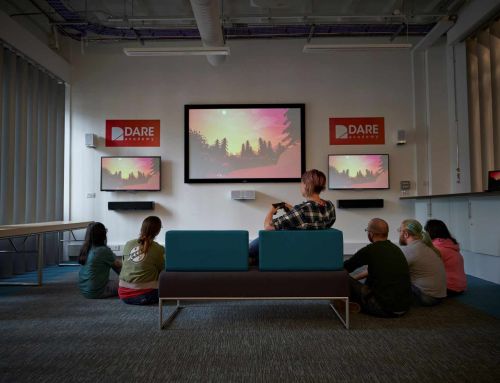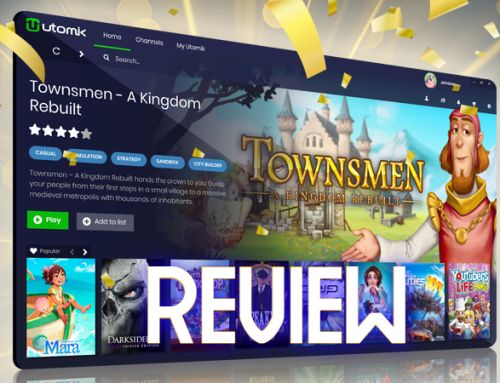Llamas! Llamas for all!
Late last year, Digital Eclipse, those wonderful masters behind several retro favorites like Teenage Mutant Ninja Turtles: The Cowabunga Collection and Atari 50, launched the Gold Master Series, a collection that takes a “hands-on” approach to classic games. The initial entry in the series, Karateka, was a massive hit with us. And now the team is back with a new chapter coming in 2024, focusing on the accomplishments of Jeff Minter and Llamasoft.
The Jeff Minter Story is set to arrive in early 2024, and features a number of favorites from the legendary developer — including, yes, Tempest 2000. Not only that, but it also has interviews with Minter and others, looking at the diverse history of the games he worked on. And, yes, llamas.
Joining us now to discuss this further is Chris Kohler, who serves as editorial director for Digital Eclipse. He discusses how the game came about, what to expect, and what’s up with the whole “llamas” thing. (They’re everywhere!)
First off, how did the decision come about to go with Llamasoft and Jeff Minter for the Gold Master Series? Did the llamas make you do it?
The Gold Master Series is all about showcasing the key creators, games, series, companies, and stories that left a lasting impact on the history of video games, and Jeff Minter is certainly a standout example of that. He loves games, he was inspired by his deep passion for the arcade games of the 1980s to create his own, and he did it all as a fiercely independent auteur who wanted to create games that were personal to him, the sorts of things that he wanted to play that reflected his own unique personality, tastes, and interests. We think everyone should learn about the story of Llamasoft, and should be able to access these important games easily.
We took the llamas’ requests into consideration, but they have no controlling legal authority.
How excited was Minter to take part in such a project?
Jeff was a great help! We had biweekly meetings with him where we’d constantly be making new requests for obscure box scans, the contents of his notebooks, etc. He mailed us some vintage Llamasoft posters at one point. We asked him if he could mock up a fake screenshot of what his lost game Deflex looked like on the Commodore PET computer, and he ended up recreating the entire game!
He’s got a huge variety of games included, up to 42 titles. And including some obscure favorites as well, such as Sheep In Space, Andes Attack and Laser Zone. Was it important to include a number of these obscure games for fans to check out?
We wanted to include as many games as we possibly could, yes. So many of these games are difficult to play today – even if you just wanted to get them running on an emulator with an image you found on the internet, that can really be a challenge to get all the settings and controls right! Our selection method has less to do with whether or not a game is well-known or reviewed well at the time or even whether it comports with our 2024 definition of “fun.” It’s about historical importance, it’s about, does this game let us tell an interesting story? That’s a big part of what separates these interactive documentaries from the “retro collection” approach.
Like Karateka, will we see a bunch of interviews from Minter and several others?
Even better – we’ve worked with Paul Docherty, the director of the upcoming documentary film Heart of Neon, to produce about an hour of beautiful featurettes with far more interviewees, footage, and archival materials than we’d have been able to pull together on our own.
Will there be llama interviews? Or did they try to eat the microphone?
We had to remove the llamas’ remarks to maintain our preferred ESRB and PEGI ratings. They will make cameo appearances, however.
What was the biggest challenge when it came to putting a collection like this together?
I’m sure the engineers would answer this question very differently, but from my perspective, it was finding all of the extremely rare game packaging that we wanted to include! Not even Jeff had everything, but he was able to put us in touch with a generous collector who scanned many very rare items, things that Jeff probably hand-assembled back in the day. Artisanal game releases.
What do you think of the feedback you’ve received thus far from the previous Gold Master Series release? Do you believe that will provide a much bigger impact with what’s to come for Jeff Minter?
We were blown away by the reception we got for The Making of Karateka, and I hope that as we continue to grow the Gold Master Series, that will bring in more folks to the series. Each new game represents a new entry point, and hopefully that will then cause people to look back at previous Gold Master Series releases that they might have missed.
Tell us about the significance of Attack of the Mutant Camels, and how it was originally supposed to come out for a system that has since become obsolete.
In the late 80s, a British company called Konix was preparing a new game console called the Konix Multi-System. As Konix was a manufacturer of controllers (they made the very popular 500XJ joystick for Epyx), it was a very control-oriented machine that included a steering wheel, bike handlebars, and a flight yoke that attached to the front of the console itself. The UK press covered this machine with excitement because this meant that the UK would have its own home console to compete with the American and Japanese platforms.
Jeff made a big bet on the Konix and put a substantial amount of Llamasoft’s resources into creating Attack of the Mutant Camels ’89, a new 16-bit version of his classic Commodore 64 shooter. But he got the rug pulled out from under him when the Konix got delayed and delayed some more until it was finally canceled. We cover this whole story in Llamasoft: The Jeff Minter Story so that the player understands the context in which this demo was produced, and then you can actually play the demo. The crazy thing about it is that the Konix Multi-System itself was never actually released – the author of the emulator actually put it together without the hardware to reference, and just used technical documentation. So you’re playing an unreleased game for an unreleased platform. It’s a miracle that it exists and we’re thrilled to feature it.
Let’s also talk about the remaster of Gridrunner. Do you believe this will become an audience favorite, like Tempest 2000 before it?
The cool thing about Gridrunner Remastered is that even though it looks totally new, with new graphics and audio and even new dynamic camera work, it’s not a remake – it’s literally just Jeff’s original Commodore 64 version, running in an emulator, and we’re swapping in the new look on top of it. At any time, you can press a button and seamlessly swap between the two presentations. So we hope people try it out and enjoy it and appreciate the authenticity of it – you’re not playing our take on Gridrunner, you’re really playing Jeff’s Gridrunner.
How has reception been for the announcement thus far?
It seems that we have tapped into a rich, hidden vein of Minter enthusiasm. Certainly those who enjoyed The Making of Karateka are looking forward to a similar experience, but we hope that this will grow the audience for the Gold Master Series as we bring in the Minter fans (human or otherwise).
Finally, are you planning even more Gold Master Series releases? Or are you waiting to see if the llamas take over the world yet?
Did the llamas put you up to asking this? We never should have taught them how to email.
Llamasoft: The Jeff Minter Story arrives on consoles and PC in early 2024.







